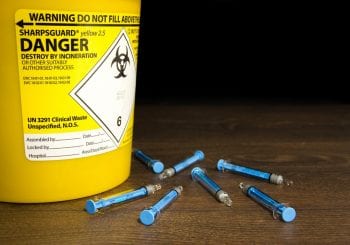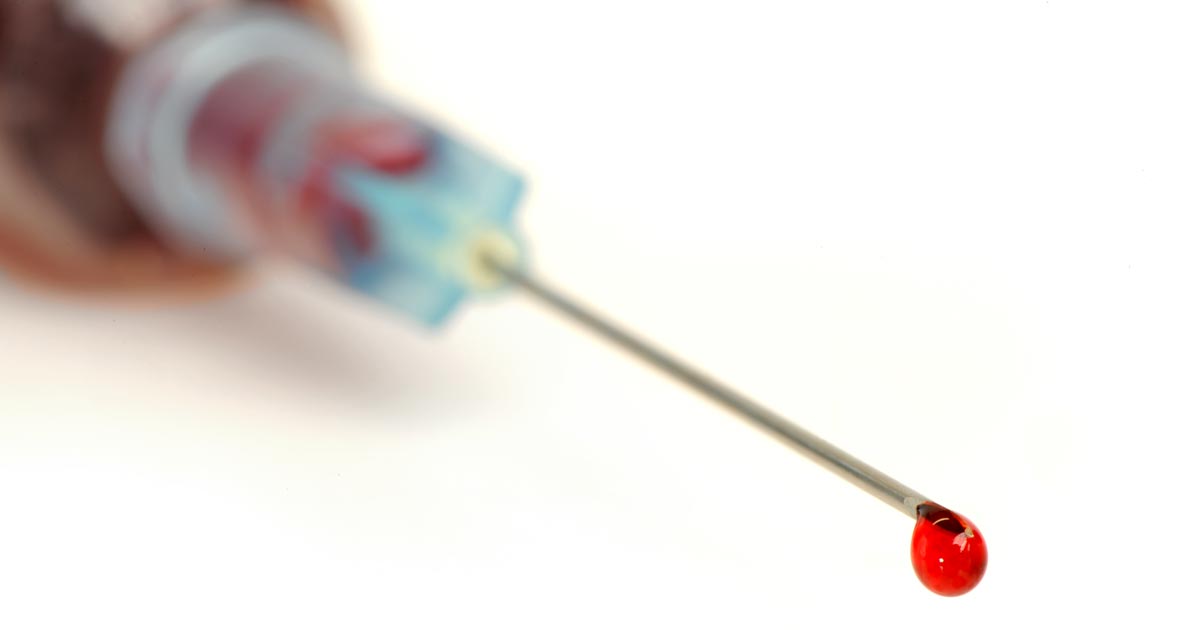We’re often strangely silent about the injuries we get at work – the ubiquitous needlesticks, the mystery bruises that appear from nowhere on legs and arms, the strange scratches on arms or necks.
It’s not that we’re clumsy or bad at our job, it’s more that, in the average fast-paced veterinary clinic, we are usually trying to do several things at once and, sometimes, something has to give.
That said, I know from teaching OSCE skills that the “safe handling” methods for needles are often mocked. Do we care so little for our own safety that suggestions to save us from a very common injury aren’t deemed worthy of learning?
Stubborn silence
To put things into perspective, needlestick is the #1 injury in human health care – higher than the usual “slips, trips and falls” of all other industries. I’m sure we’ve all had a needlestick and not reported it – but lack of reporting is a major issue, so please remember needlestick injuries are rarely caused by a lack of skill, more often they are genuine accidents caused by a number of different factors.
A 2016 study by Ana Cláudia Coelho cites a number of reasons for needlestick injuries, but none are due to the practitioner’s poor skills. Instead they include:
- patient movement
- inadequate restraint
- inadequate access to sharps containers

Please report any injuries and put them in the accident book – it may be there are ways to make your clinical work safer, but that change needs to happen in response to individual clinic issues.
Safe handling legislation
It is only from reviewing the issues we have in clinic that we can improve our working conditions and with it patient welfare. There are safe handling guidelines and they shouldn’t just be restricted to your OSCE practice, but should include:
- elimination – the use of needless ports and removing the use of sharps where alternatives could be used
- engineering controls – considering the use of needle shielding or needle retracting device
- safety procedures – personalised to individual clinic needs and dependant on staff and patient needs
Check out the Pharmaceutical Journal article What you need to know about the new EU legislation on needle stick injuries for more advice.
Cost of injury versus cost of needle free
I’m sure there are many of you now thinking there is a cost attached to needless ports or the provision of more sharps bins, and that this isn’t a cost you can justify…
Well, there is a cost attached to the financial and personal impact of each needlestick injury – and, as with most things, prevention of injuries is better than a cure once an incident has happened.
To put the costs into perspective, there are needle-free ports for sale for less than £1.50 each (and I’m sure there are better deals out there), whereas in the five years from 2012-2017, the cost of needlestick claims to the NHS was more than £4 MILLION pounds. Comparatively, this makes the additional £1.32 spend for a patient on fluids and medication seem somewhat less of a financial hit.
Caring for us
The emotional cost of time off work with an injury is harder to quantify, but the loss of earnings and loss of confidence associated with enforced time away from work have very negative mental health aspects.
Alongside the move for our holistic health and mental well-being, we still need to consider the sometimes ignored workplace injuries that have a physical, emotional and financial impact.
Be brave, report, take time to heal and work with your teams to reduce the opportunities for injuries. We’re all worth it.

Leave a Reply